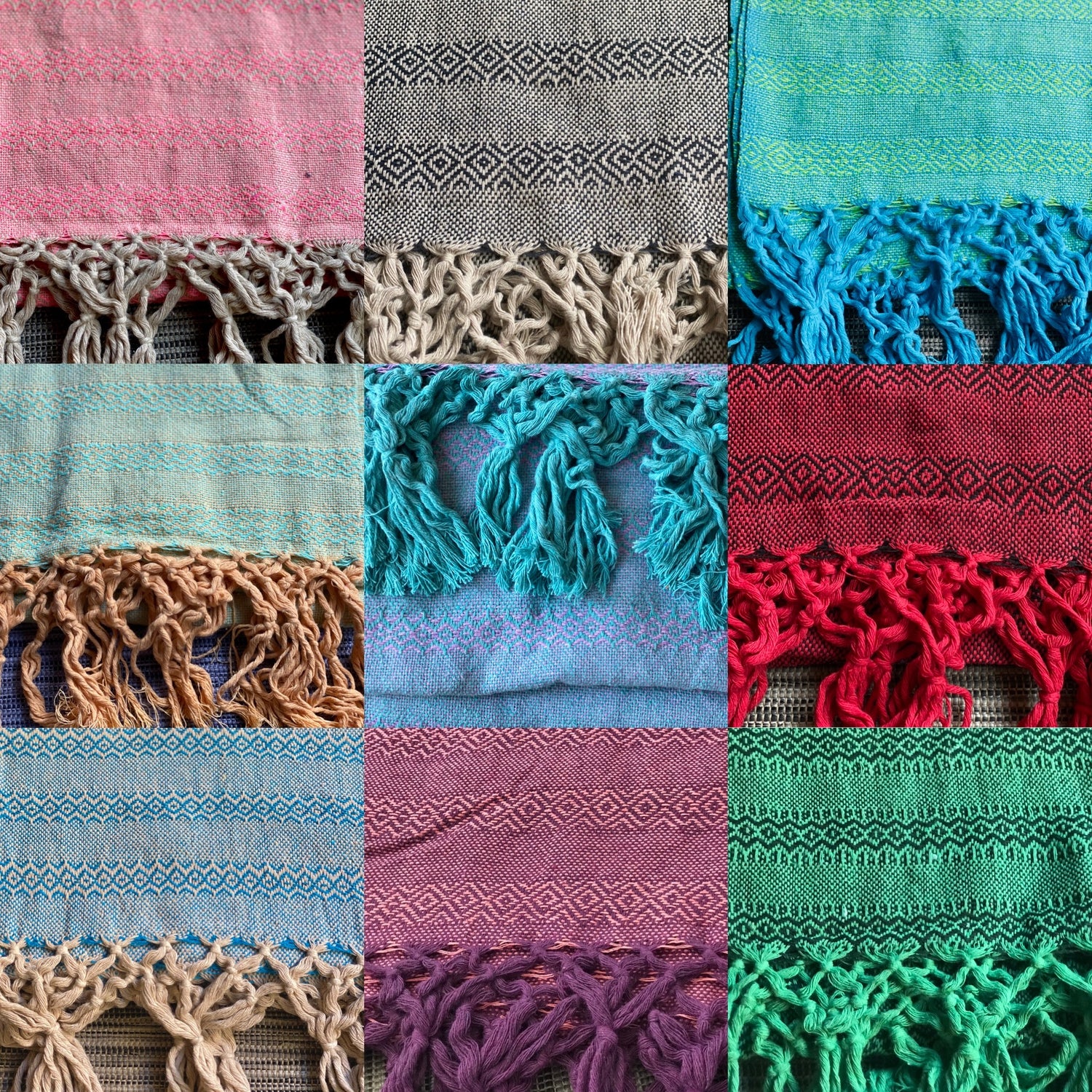The rebozo is much more than a simple shawl; it is a powerful symbol of Mexican independence and national identity.
Worn prominently during celebrations, it represents the pride and resilience of women throughout Mexico's history.
As you dive into this topic, you'll discover how the rebozo connects the past to the present and continues to play a vital role in cultural expression.

Throughout history, the rebozo has been intertwined with significant events, especially during the fight for independence. From serving as a practical garment to being a canvas for artistic expression, it highlights the evolution of Mexican culture and the enduring spirit of its people.
You'll learn about its artistic value in contemporary society and how it carries the stories, struggles, and triumphs of past generations.
As you explore this rich topic, consider how the rebozo not only enhances celebrations but also fortifies your connection to a profound cultural heritage.
Its significance transcends mere decoration and anchors you to the larger narrative of Mexico's national identity.
Key Takeaways
- The rebozo symbolizes pride and resilience in Mexican culture.
- This garment has historical ties to the fight for Mexican independence.
- Today, the rebozo continues to represent national identity and artistic expression.
Historical Significance of Rebozos in Mexican Independence

Rebozos have deep cultural and historical roots in Mexico, particularly during significant periods like the colonial era and the fight for independence. Their symbolism evolved and became intertwined with the national identity of Mexico.
Symbolism of Rebozos During the Colonial Period
In the colonial period, rebozos were an everyday item for mestizo women, representing their social status and cultural identity. These shawls were often made with intricate patterns and colors, which varied by region, reflecting local customs.
Rebozos served practical purposes, such as keeping warm and carrying goods. However, they also symbolized resistance and tradition against Spanish colonization.
Women wrapped in rebozos often became symbols of cultural pride, embodying the blend of indigenous and Spanish influences. This early representation laid the groundwork for their role in the fight for independence.
Rebozos in the Mexican Revolution and Independence Day Celebrations
During the Mexican Revolution, rebozos transformed into symbols of unity and resistance. The revolutionaries, including the iconic Adelitas, wore these shawls to showcase their commitment to the cause. These women played significant roles in the fight, often acting as nurses, soldiers, and supporters.
On September 16, Mexican Independence Day, rebozos become vital elements of celebrations. Women proudly wear them to honor their heritage and to express national pride. The shawl signifies a connection to the past while also embracing the present.
Its appearance at these events reinforces the collective memory of the struggles faced by the nation.
Prominent Figures and the Rebozo
Several prominent figures in Mexican history have helped elevate the status of the rebozo. Artists like Frida Kahlo used the shawl in their works, symbolizing Mexican identity and heritage. Additionally, actress María Félix wore rebozos in her films and public appearances, further associating them with elegance and national pride.
Lila Downs and Margarita Zavala have also embraced the rebozo in their work, promoting its significance in modern Mexican culture. The rebozo remains a powerful symbol, reflecting the complexities of Mexican identity and the ongoing celebration of independence, connecting past leaders to contemporary society.
The Cultural and Artistic Value of the Rebozo in Contemporary Mexico

The rebozo is more than just a garment; it holds deep cultural significance and artistic value in Mexico today. Its history and craftsmanship reflect a blend of indigenous and Spanish influences, shaping Mexican identity through fashion and art.
Rebozos in Fashion and Media
In contemporary fashion, the rebozo is celebrated as a versatile accessory that blends tradition with modern style. Designers incorporate rebozos into their collections, showcasing their beauty on runways and in media campaigns.
You will find rebozos featured in various forms, from elegant evening wear to street fashion, highlighting their adaptability.
Media portrayals often emphasize the rebozo's role in expressing femininity and cultural pride. You might see it worn by influential figures, reinforcing its status as a symbol of Mexican identity.
This garment adapts to current trends while maintaining its historical essence, helping to preserve traditional styles for new generations.
Craftsmanship and Production Techniques
The artistry behind making rebozos is rich and varied. Skilled artisans use traditional weaving techniques, often passed down through generations.
Techniques such as ikats showcase intricate patterns and colors, making each rebozo unique.
Materials like cotton and silk are commonly used, chosen for their durability and comfort. Additionally, the use of fringe adds a distinctive touch.
Artisans from regions like Puebla, Oaxaca, and Guanajuato are known for their specific designs and craftsmanship methods, reflecting their local heritage.
Production also involves community involvement, where groups collaborate to maintain these age-old practices. This not only fosters economic growth but also ensures the survival of their cultural narratives.
Geographical and Cultural Variants of Rebozos
The rebozo varies significantly across different regions in Mexico.
For example, in San Luis Potosí, rebozos may feature bold colors and textures, while those from Chiapas tend to have more vibrant patterns influenced by local traditions.
Each variant tells a story about its place of origin and the cultural influences it has absorbed. In Tlaxcala, for instance, you will find designs that reflect both Spanish and indigenous weaving traditions, showcasing the area's rich history.
This diversity emphasizes the rebozo's role as a canvas for cultural expression, bridging gaps between history, race, and modern Mexican identity.
Frequently Asked Questions

In this section, you will find information about the rebozo's role in Mexican Independence celebrations, its contribution to national identity, and its historical significance. You will also learn about its use in traditional festivities and the meanings behind its colors and designs.
How has the rebozo been integrated into Mexican Independence celebrations?
The rebozo is often worn by women during the annual Mexican Independence Day celebrations on September 16. It serves as a symbol of patriotism and cultural pride.
Many women wear their rebozos as a way to honor their heritage and participate in the national festivities.
In what ways does the rebozo contribute to Mexican national identity?
The rebozo is a powerful representation of Mexican culture and identity. It connects people to their roots and traditions.
By wearing the rebozo, individuals express their pride in their nationality and cultural history.
What is the historical significance of the rebozo in Mexican culture?
Historically, the rebozo dates back to colonial Mexico, where it was used by women for practical purposes. Over time, it evolved into a cultural icon that reflects the artistry and craftsmanship of various regions.
Its rich history showcases the resilience and creativity of Mexican women.
How is the rebozo used in traditional Mexican festivities and ceremonies?
In many traditional ceremonies, like weddings, funerals, and religious events, the rebozo often serves both functional and symbolic purposes, such as draping over the shoulders during rituals.
This use highlights its significance in Mexican cultural practices.
What are the cultural meanings attributed to the rebozo's colors and designs?
The colors and designs of rebozos can carry specific meanings, often representing community, region, or occasion.
Bright colors may symbolize joy, while darker tones can convey solemnity. Each design reflects the unique identity of the area it comes from, showcasing the individuality of the wearer.
How has the use of the rebozo evolved throughout Mexican history?
The rebozo has changed in style and use over the years. What began as a simple shawl for everyday wear has transformed into an item of cultural significance.
Today, you can find modern interpretations that blend traditional weaving techniques with contemporary fashion.




